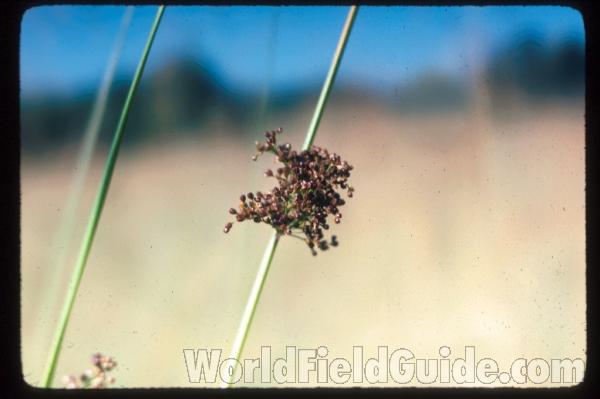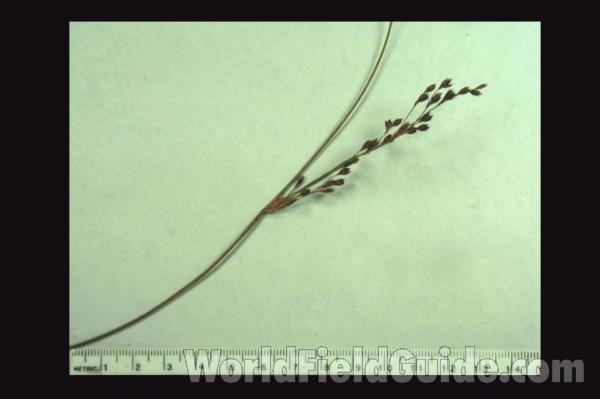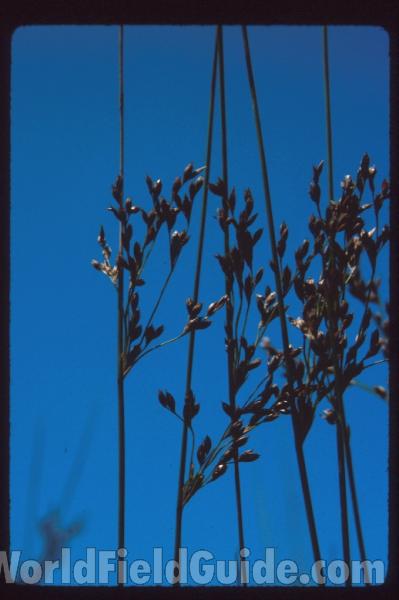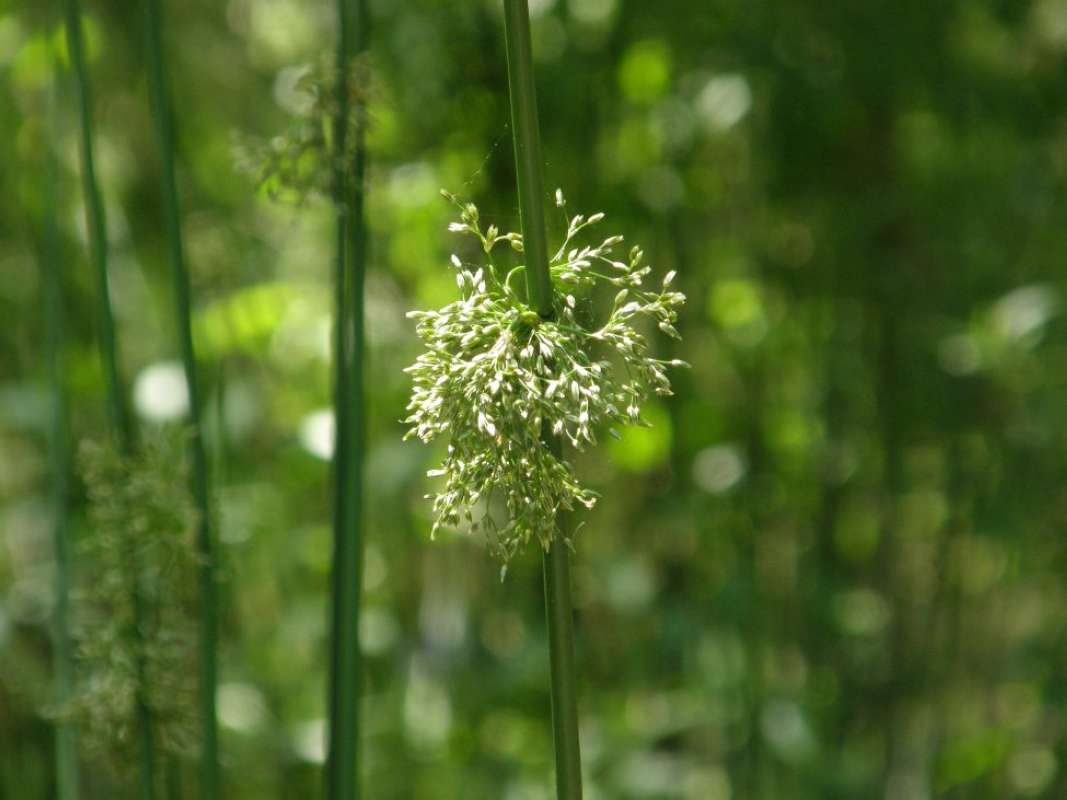SPECIES INFO
Common rush (Juncus effusus) is found in swamps and moist places in the Northern Hemisphere in both the Old and New World. In the New World, it is found widely in North America. In greater North America, this species has about nine named varieties. This rush can grow to about four feet tall. This species was originally named by Linnaeus.Juncus genus (rush) is found worldwide, but most species are found in the temperate regions. There are about 225 species in this genus. These plants usually grow in swamps or other moist places. These are perennial herbs of a glabrous (smooth) nature. They are very grass-like in appearance with round stems. The green or brown flowers are small. There are 113 species, seven natural hybrids, and 61 named subspecies and varieties now established in greater North America.
Rushes (Family Juncaceae) are a small worldwide family of ancient origin. This family appears absent in north western South America and parts of Africa. There are about 400-450 species in this family distributed in about ten genera. Most of the species live in semi-aquatic habitats such as marshes, shores, and wet meadows. There are 137 species in two different genera now established in greater North America, including Greenland and Alaska.
Lily Order (Order Liliiflorae) contains several families many of which are noted for their beautiful flowers. In addition to the rushes, this order contains the well-known lily family. Although some authors combine them with the lilies, here the Amaryllis, Iris, and Agave groups are presented in separate families.
Monocots are a large group of plants usually characterized by having leaves with parallel veins and a seed with a single shell. Most flowers are created with multiples of three. In the older botany texts, the Monocots were considered more primitive than the Dicots. However, many recent authors have placed the Monocots as an offshoot of the primitive Dicots. Here they are placed before the Dicots.
In l951 Lawrence at Cornell published a very detailed plant taxonomy for vascular plants. His taxonomy is very useful as he provided both a detailed explanation and also covered many genera. In the l990s Cronquist published a new plant taxonomy that improved the older taxonomy based on new knowledge. About the same time, Dahlgren published a different taxonomy.
Seed plants (Phylum Embryophyta) are generally grouped into one large phylum containing three major classes: the Gymnosperms, the Monocots, and the Dicots. (Some scientists separate the Gymnosperms into a separate phylum and refer to the remaining plants as flowering plants or Angiospermae.)
For North American counts of the number of species in each genus and family, the primary reference has been John T. Kartesz, author of A Synonymized Checklist of the Vascular Flora of the United States, Canada, and Greenland (1994). The geographical scope of his lists include, as part of greater North America, Hawaii, Alaska, Greenland, Puerto Rico, and the Virgin Islands.
Kartesz lists 21,757 species of vascular plants comprising the ferns, gymnosperms and flowering plants as being found in greater North America (including Alaska, Hawaii, Greenland, Puerto Rico and the Virgin Islands.
There are estimates within the scientific world that about half of the listed North American seed plants were originally native with the balance being comprised of Eurasian and tropical plants that have become established.
Plant kingdom contains a large variety of different organisms including mosses, ferns, and seed plants. Most plants manufacture their energy from sunlight and water. Identification of many species is difficult in that most individual plants have characteristics that have variables based on soil moisture, soil chemistry, and sunlight.
Because of the difficulty in learning and identifying different plant groups, specialists have emerged that study only a limited group of plants. These specialists revise the taxonomy and give us detailed descriptions and ranges of the various species. Their results are published in technical journals and written with highly specialized words that apply to a specific group.
On the other hand, there are the nature publishers. These people and companies undertake the challenging task of trying to provide easy to use pictures and descriptions to identify those species.






